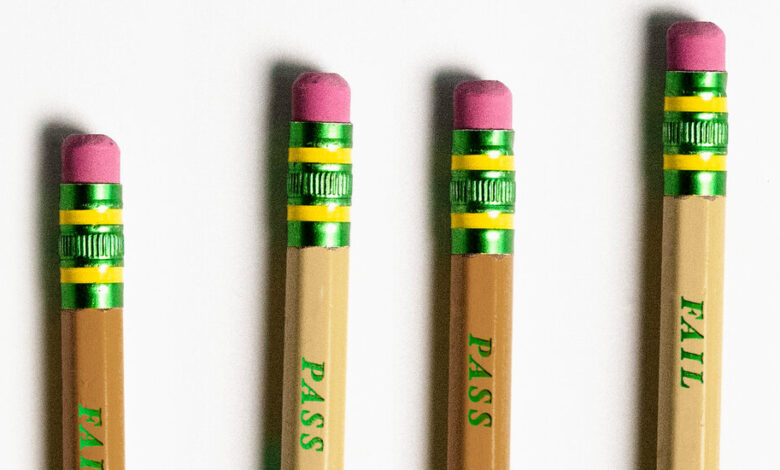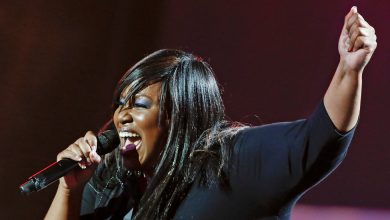Lower Black and Latino Pass Rates Don’t Make a Test Racist

The Association of Social Work Boards administers tests typically required for the licensure of social workers. Apparently, this amounts to a kind of racism that must be reckoned with.
There is a Change.org petition circulating saying just that, based on the claim that the association’s clinical exam is biased because from 2018 to 2021 84 percent of white test-takers passed it the first time while only 45 percent of Black test-takers and 65 percent of Latino test-takers did. “These numbers are grossly disproportionate and demonstrate a failure in the exam’s design,” the petition states, adding that an “assertion that the problem lies with test-takers only reinforces the racism inherent to the test.” The petitioners add that the exam is administered only in English and its questions are based on survey responses from a disproportionately white pool of social workers.
But the petition doesn’t sufficiently explain why that makes the test racist. We’re just supposed to accept that it is. The petitioners want states to eliminate requirements that social workers pass the association’s tests, leaving competence for licensure to be demonstrated through degree completion and a period of supervised work.
So: It’s wrong to use a test to evaluate someone’s qualifications to be a social worker? This begins to sound plausible only if you buy into the fashionable ideology of our moment, in which we’re encouraged to think it’s somehow antiracist to excuse Black and brown people from being measured by standardized testing. There have been comparable claims these days with regard to tests for math teachers in Ontario and state bar exams, and, in the past, on behalf of applicants to the New York City Fire Department.
One of the weirdest assertions in the petition is that the social work association “is suggesting that Black, Latine/Hispanic and Indigenous social workers, by virtue of their race, are less capable of passing standardized tests.” (The first-time pass rate for Indigenous test-takers was 63 percent; for those of Asian descent it was 72 percent.) But based on the numbers, it would appear some are, absent details of just how the test is racist.
If there were clear evidence of this, presumably the petitioners would have outlined it in order to make their case. But the petition doesn’t prove the exam’s design is fatally flawed and doesn’t show which test components are out of bounds. We must address this problem more constructively.
This will mean taking a deep breath and asking why it is that in various instances, Black and Latino test-takers disproportionately have trouble with standardized tests. The reason for the deep breath is the implication ever in the air on this subject: that if the test isn’t racist, then the results might suggest that they aren’t as smart as their white peers. That’s an artificially narrowed realm of choices, however. There is more to what shapes how people handle things like standardized tests.
Broadly speaking, standardized testing has been criticized in a variety of ways. A 2021 article in NEA Today, a publication of the National Education Association, claims, “Since their inception a century ago, standardized tests have been instruments of racism and a biased system,” an observation channeling an opinion common in education circles that standardized tests measure test-taking ability rather than proficiency. But these claims miss a dynamic that sheds light on this issue.
One source I’ve always valued is a book published in 1983, “Ways With Words: Language, Life and Work in Communities and Classrooms,” by the linguistic anthropologist Shirley Brice Heath, who compared how language was used with children in a middle-class white community, a working-class white one and a working-class Black one. She found that in conversation, questions were wielded differently depending on the community. A key difference was that in middle-class white ones, children were often asked disembodied, information-seeking questions as a kind of exercise amid general social interaction. Heath wrote:
In the middle-class subculture Heath describes, children unconsciously incorporate into their mental tool kit a comfort with retaining and discussing facts for their own sake, as opposed to processing facts mainly as they relate to the practicalities of daily existence. The same kind of skill development that’s fostered by reading for pleasure or personal interest — as opposed to reading for school lessons — a ritual which preserves and displays information beyond the everyday.
Heath found that while the printed page is hardly alien to the working-class Black community (which she gives the pseudonym “Trackton”; her pseudonymous white working-class community is “Roadville” and her pseudonymous white middle-class community is “Maintown”), and questions themselves are certainly part of how language is used within it, particular kinds of questions about matters unconnected to daily living were relatively rare. A paper published in 1995 by the National Languages and Literacy Institute of Australia cited Heath and notes that “the Trackton world is warm, buzzing with emotion and adult communication, an environment to which the child gradually adapts by a process of imitation and repetition.” However, it adds, “the language socialization of the Trackton child is,” in contrast to Maintown, “almost book-free.” One Trackton grandmother described part of the dynamic to Heath in this way: “We don’t talk to our chil’rn like you folks do. We don’t ask ’em ’bout colors, names ’n things.”
Yes, Heath’s book was written some time ago. Certainly, Black kids don’t grow up not knowing their colors or that things have names. But that quote does get at something in a general sense. Importantly, Heath’s study was objective and respectful. She isn’t a culture-wars partisan. Her point wasn’t that Black culture, or working-class culture, is unenlightened or that Black people or working-class white people are in any sense inarticulate. Neither she then, nor I now, say there is some flaw in Black or working-class white culture.
The issue is, rather, how we square what worked for the past with what will work for today. No culture can be faulted for lagging a bit on that. Working-class Black culture was born amid hard-working people in segregated America for whom higher education was, in many, if not most cases, a distant prospect, and language was used to operate in the here and now. Think of August Wilson’s plays.
That makes perfect sense in a working-class setting and is the way most people in the world proceed linguistically. Heath noted, though, about both the white and Black working-class communities she studied that “neither community’s ways with the written word prepares it for the school’s ways.” In that context, it’s easier to understand stubbing a proverbial toe on standardized tests at first.
I experienced this as a 1970s middle-class Black kid, coming of age just a decade or so after the assassination of Martin Luther King Jr., growing up in neighborhoods with lots of “post-civil rights” Black kids of various backgrounds. Middle- and upper-middle class Black families, while taking advantage of widened opportunities, could still dialogue in the way Trackton families did, and many still do. This is hardly limited to Black people. However, to the extent that we still have a wealth gap and an education gap, and that the poverty rate is disproportionately high for Black, Latino and Indigenous people, we might expect these groups, in the aggregate, to be affected by this aspect of language and its legacies.
Let’s recognize, then, that calling something like a credentialing exam racist is crude — it flies past issues more nuanced and complex. Heath’s study doesn’t have all the answers, and there are many working-class homes in which children are prepared with the conversational and analytical skills required to excel on standardized tests. But we might absorb the reality that circumstances will leave some people better poised to take tests than others, and that will mean pass rates on such tests will differ according to race at least for a while.
And let’s recognize that the pass rate on the social work association’s clinical exam goes up after successive attempts: According to the association, the eventual pass rate is 57 percent for Black test-takers, 77 percent for Latinos and 74 percent for Native Americans. Also, among social workers, Black people are overrepresented — over 20 percent as of 2017 — in relation to our proportion of the population, which hardly suggests an obstacle to Black participation in the profession.
Might there be a reason to adjust the exams? Perhaps, if, as the petition states, among the social workers surveyed in order to compose the questions, 80 percent are white people, even though Black and Latino people combined constitute 36 percent of new social workers. If nothing else, to eliminate the appearance of bias, the association ought to survey a representative group to generate test questions.
But insisting simply that it is racist, and therefore, constructively, immoral, to subject Black and Latino social workers to standardized test questions is itself a kind of immorality. It’s a squeak away from arguing that Black and Latino people just aren’t very quick on the uptake or can’t think outside of the box. What kind of antiracism is that?
Have feedback? Send a note to [email protected].
John McWhorter (@JohnHMcWhorter) is an associate professor of linguistics at Columbia University. He hosts the podcast “Lexicon Valley” and is the author, most recently, of “Woke Racism: How a New Religion Has Betrayed Black America.”




